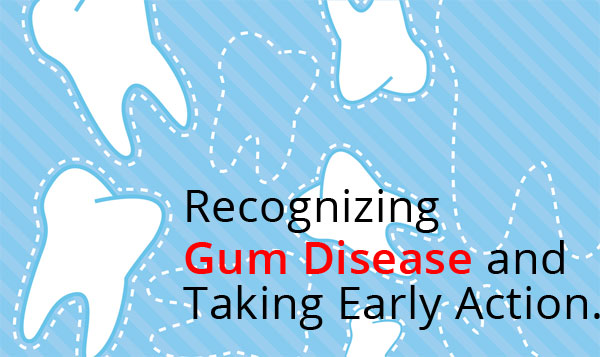Periodontal (gum) disease, affects as many as half of all Americans. Gum disease can cause minor symptoms like inflamed or bleeding gums to an even more serious loss of soft tissue and bone. If left untreated, gum disease may mean that teeth are lost or have to be removed.
What to look for.
If your gums or those of your child bleed from routine brushing and flossing you should understand that this is not normal. Bleeding gums result from inflammation caused by bacteria hiding beneath the gum line. Gums may appear red or swollen. It’s important not to ignore these early signs of gum disease, called gingivitis. Regular brushing and flossing is essential to avoiding or helping to correct the earliest signs of gum disease, but a scheduling a dental checkup is the best route to stop gum disease before it gets worse.
What is Periodontis?
When left unchecked, gingivitis can quickly become a more advanced gum disease known as “periodontis”. When this occurs, small spaces begin to form around the tooth where plaque has hardened. Not only can this mean a permanent loss of bone, but the toxins that eventually find their way into the rest of the body can have far reaching effects. Recent studies have even highlighted the relationship between gum disease and heart disease.
Preventing & Treating Gum Disease
If you believe that you or your children may have any stage of gum disease, it’s important to take action. Aside from maintaining a regular schedule of oral care, be sure to stay active with dental checkups every six months or sooner if there is a potential problem. You should be aware of other risk factors which may play a role in significantly increasing the likelihood of gum disease. These include smoking, diabetes, medications causing dry mouth and hormonal changes in young girls and women.
Have more questions?
As always, please feel free to reach out to us if you have concerns about your family’s oral health. Give us a call or schedule an appointment today!


Thanks for sharing such great information. Poor dental hygiene can result in gum disease, periodontal disease, and tooth decay. Regular dental visits might assist you in avoiding these issues and maintaining good oral health.
According to study, oral bacteria and the inflammation associated with a severe type of gum disease (periodontitis) may play a role in a variety of illnesses. Additionally, certain conditions, such as diabetes, might impair the body’s reaction to infection, exacerbating oral health problems.
https://www.theoralhealthcenter.com/preventive-care/gum-disease-treatment/
It is very nice to know, especially for parents. The earliest stage of gum disease, also known as gingivitis, is the easiest to reverse as per our kid’s dentist from https://timberfallspediatricdentistry.com/. Your dentist can help catch early signs of gingivitis at your regular cleanings and checkups. In most cases, you can cure gum in this stage.